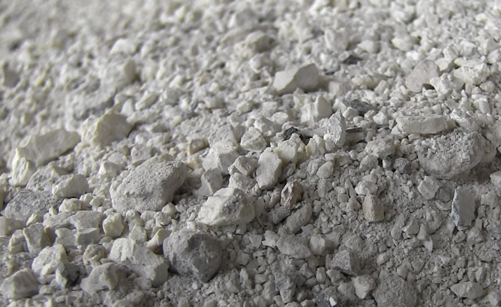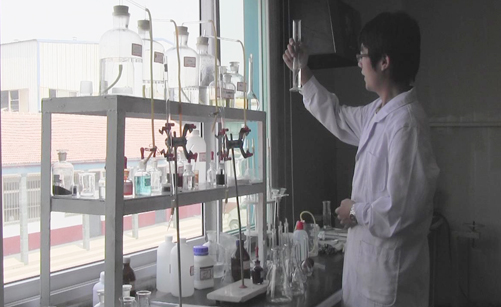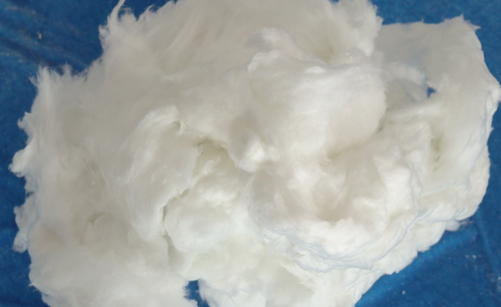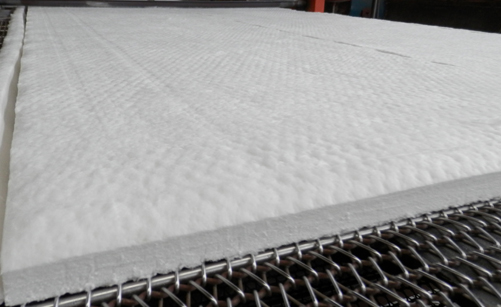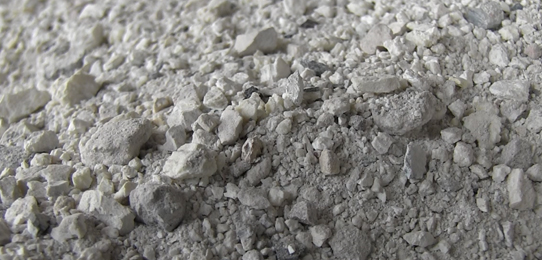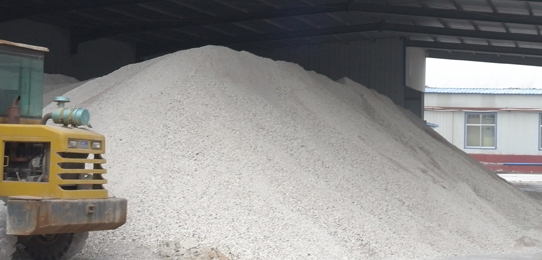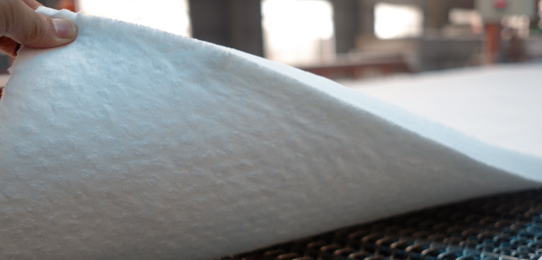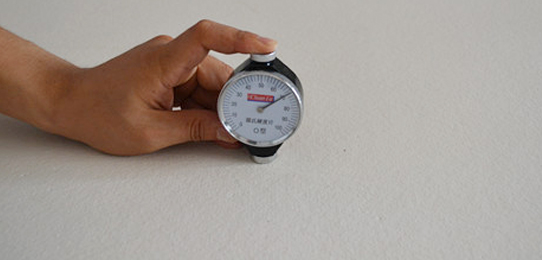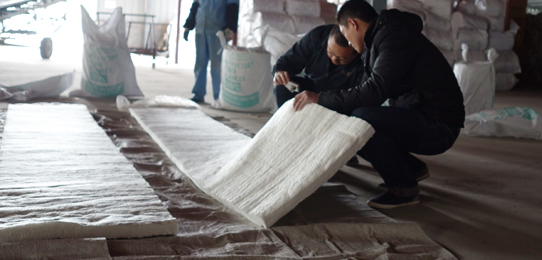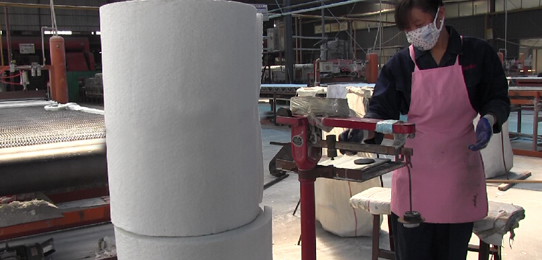CCEWOOL ceramic fiber has ultra-low thermal conductivity, ultra-low shrinkage, super strong tensile force, and excellent high temperature resistance. It saves energy with very low energy consumption, so it is very environmental. The strict management of CCEWOOL ceramic fiber raw materials controls impurity content and improves its heat resistance; the controlled production process reduces the slag ball content and improves its thermal insulation performance, and the quality control ensures the volume density. Therefore, CCEWOOL ceramic fiber products produced are more stable and safer to use.
CCEWOOL ceramic fiber is safe, non-toxic, and harmless, so it effectively addresses environmental problems and reduces environmental pollution. It does not produce harmful substances nor cause harm to staff or other people when provided for equipment. CCEWOOL ceramic fiber has ultra-low thermal conductivity, ultra-low shrinkage, and super strong tensile force, which realizes the stability, safety, high efficiency, and energy saving of industrial furnaces, and provides the greatest fire protection for industrial equipment and personnel.
From the main quality indicators, such as the chemical composition of the ceramic fiber, the linear shrinkage rate, the thermal conductivity, and the volume density, a good understanding of the stable and safe CCEWOOL ceramic fiber products can be achieved.
Chemical Composition
Chemical composition is an important index for evaluating the quality of ceramic fiber. To a certain extent, the strict control of harmful impurity content in fiber products is more important than ensuring the high temperature oxide content in the chemical composition of fiber products.
① The specified content of high temperature oxides, such as Al2O3, SiO2, ZrO2 in the composition of various grades of ceramic fiber products should be ensured. For example, in high-purity (1100℃) and high-aluminum (1200℃) fiber products, Al2O3 + SiO2=99%, and in zirconium-containing (>1300℃) products, SiO2 +Al2O3 +ZrO2>99%.
② There must be strict control of harmful impurities below the specified content, such as Fe2O3, Na2O, K2O, TiO2, MgO, CaO... and others.
Amorphous fiber devitrifies when heated and grows crystal grains, causing the deterioration of fiber performance until it loses the fiber structure. High impurity content not only fosters the formation and devitrification of crystal nuclei, but also reduces the liquidus temperature and viscosity of the glass body, and thereby promotes the growth of crystal grains.
The strict control over the content of harmful impurities is an important step of improving the performance of fiber products, especially their heat resistance. Impurities cause spontaneous nucleation during the crystallization process, which increases the granulation speed and promotes crystallization. Also, the sintering and polycrystallization of impurities at the fiber contact points boost the growth of crystal grains, resulting in coarsening crystal grains and increasing the linear shrinkage, which are the main reasons attributing to the deterioration of fiber performance and the reduction of its service life.
CCEWOOL ceramic fiber has its own raw material base, professional mining equipment, and strict selection of raw materials. The selected raw materials are put into a rotary kiln to be fully calcined on site in order to reduce the content of impurities and improve their purity. The incoming raw materials are tested first, and then the qualified raw materials are kept in a designated raw material warehouse to ensure their purity.
Through strict control at every step, we reduce the impurity content of the raw materials to less than 1%, so the CCEWOOL ceramic fiber products are white in color, excellent in fiber heat resistance, and more stable in quality.
Linear Shrinkage of Heating
Linear shrinkage of heating is an index for evaluating the heat resistance of ceramic fiber products. It is uniformed internationally that after ceramic fiber products are heated to a certain temperature under a non-load condition, and after holding that condition for 24 hours,the high temperature linear shrinkage indicates their heat resistance. Only the linear shrinkage value measured in accordance with this regulation can truly reflect the heat resistance of products, that is, the continuous operational temperature of products under which the amorphous fiber crystallizes with no significant growth of crystal grains, and the performance is stable and elastic.
The control over the content of impurities is an important step to ensure the heat resistance of ceramic fibers. Large impurity content can cause the coarsening of crystal grains and the increase of linear shrinkage, attributing to the deterioration of fiber performance and the reduction of its service life.
Through strict control at every step, we reduce the impurity content of raw materials to less than 1%. The thermal shrinkage rate of CCEWOOL ceramic fiber products is less than 2% when kept at the operation temperature for 24 hours,and they have stronger heat resistance and longer service life.
Thermal Conductivity
Thermal conductivity is the only index to evaluate the thermal insulation performance of ceramic fibers and an important parameter in furnace wall structure designs. How to accurately determine the thermal conductivity value is the key to a reasonable lining structure design. Thermal conductivity is determined by changes in the structure, volume density, temperature, environmental atmosphere, humidity, and other factors of fiber products.
CCEWOOL ceramic fiber is produced with an imported high-speed centrifuge with the speed reaching up to 11000r/min, so the fiber formation rate is higher. The thickness of CCEWOOL ceramic fiber is uniform, and the slag ball content is less than 12%. The content of slag ball is an important index that determines the thermal conductivity of the fiber; the lower the content of slag ball is, the smaller the thermal conductivity is. CCEWOOL ceramic fiber thus has a better thermal insulation performance.
Volume Density
Volume density is an index that determines the reasonable selection of furnace lining. It refers to the ratio of the weight of ceramic fiber to the total volume. The volume density is also an important factor affecting thermal conductivity.
The thermal insulation function of CCEWOOL ceramic fiber mainly is realized through the utilization of thermal insulation effects of the air in products’ pores. Under certain specific gravity of solid fiber, the greater the porosity is, the lower the volume density will become.
With certain slag ball content, the effects of volume density on thermal conductivity essentially refers to the effects of porosity, pore size, and pore properties on thermal conductivity.
When volume density is less than 96KG/M3, due to the oscillating convection and stronger radiation heat transfer of the gas in the mixed structure, thermal conductivity increases as volume density decreases.
When volume density is >96KG/M3, with the increase of it, the pores distributed in the fiber appear in a closed state, and the proportion of micropores increases. As the air flow in the pores is restricted, the amount of heat transfer in the fiber is reduced, and at the same time, radiant heat transfer passing through the pore walls is also reduced accordingly, which makes thermal conductivity decrease as volume density increases.
When volume density climbs to a certain range of 240-320KG/M3, the contact points of solid fiber increase, which forms the fiber itself into a bridge through which the heat transfer increases. In addition, the increase of the contact points of solid fiber weakens pores’ damping effects of heat transfer, so thermal conductivity is no longer reduced and even tends to increase. Therefore, the porous fiber material has an optimal volume density with the smallest thermal conductivity.
Volume density is an important factor affecting thermal conductivity. CCEWOOL ceramic fiber is produced in strict accordance with ISO9000 quality management system certification. With advanced production lines, the products have good flatness and accurate dimensions with an error of +0.5mm. They are weighed before packaging to ensure that every product reaches and beyond the volume density required by customers.
CCEWOOL ceramic fiber is intensively cultivated at every step from raw materials to finished products. The strict control over the impurity content increases the service life, ensures volume density, reduces thermal conductivity, and improves tensile strength, so CCEWOOL ceramic fiber has better thermal insulation and more efficient energy saving effects. At the same time, we provide CCEWOOL ceramic fiber high-efficiency energy-saving designs according to customers’ applications.
Strict control of raw materials - To control impurity content, ensure low thermal shrinkage, and improve heat resistance
Own raw material base, professional mining equipment, and stricter selection of raw materials.
The selected raw materials are put into a rotary kiln to be fully calcined on site in order to reduce the content of impurities and improve the purity of the raw materials.
The incoming raw materials are tested first, and then the qualified raw materials are kept in a designated raw material warehouse to ensure their purity.
Controlling the content of impurities is an important step to ensure the heat resistance of ceramic fibers. The impurity content will cause the coarsening of crystal grains and the increase of linear shrinkage, which is the main reason for the deterioration of fiber performance and the reduction of its service life.
Through strict control at each step, we reduce the impurity content of the raw materials to less than 1%. The color of CCEWOOL ceramic fiber is white, the heat shrinkage rate is less than 2% at high temperature, the quality is stable, and the service life is longer.
Production process control - To reduce slag ball content, ensure low thermal conductivity, and improve thermal insulation performance
CCEWOOL ceramic fiber blankets
With the imported high-speed centrifuge, the speed reaches up to 11000r/min, so the fiber forming rate is higher, the thickness of CCEWOOL ceramic fiber is uniform, and the content of slag ball is less than 8%. The slag ball content is an important index that determines the thermal conductivity of the fiber, and that of CCEWOOL ceramic fiber blankets is lower than 0.28w/m.k in a high-temp environment of 1000oC, leading to their excellent thermal insulation performance. The use of the self-innovated double-sided inner- needle-flower punching process and the daily replacement of the needle punching panel ensure the even distribution of the needle punch pattern, which allows the tensile strength of CCEWOOL ceramic fiber blankets to exceed 70Kpa and the product quality to become more stable.
CCEWOOL ceramic fiber boards
The fully automatic ceramic fiber production line of super large boards can produce large ceramic fiber boards with a specification of 1.2x2.4m. The fully automatic ceramic fiber production line of ultra-thin boards can produce ultra-thin ceramic fiber boards with a thickness of 3-10mm. The semi-automatic ceramic fiber board production line can produce ceramic fiber boards with a thickness of 50-100mm.
The CCEWOOL ceramic fiberboard production line has a fully automatic drying system, which can make drying quicker and more thorough. The deep drying is even and can be completed within two hours. Products have good dryness and quality with their compressive and flexural strengths over 0.5MPa
CCEWOOL ceramic fiber paper
With the wet molding process and improved slag removal and drying processes on the basis of the traditional technology, the fiber distribution on ceramic fiber paper is uniform, the color is white, and there is no delamination, good elasticity, and strong mechanical processing capability.
The fully automatic ceramic fiber paper production line has a full-automatic drying system, which allows drying to be quicker, more thorough, and even. Products have good dryness and quality, and the tensile strength is higher than 0.4MPa, which makes them have high tear resistance, flexibility, and thermal shock resistance. CCEWOOL has developed CCEWOOL ceramic fiber flame-retardant paper and expanded ceramic fiber paper to meet the needs of customers.
CCEWOOL ceramic fiber modules
CCEWOOL ceramic fiber modules are to fold the cut ceramic fiber blankets in a mold with fixed specifications so that they have good surface flatness and accurate sizes with a small error.
CCEWOOL ceramic fiber blankets are folded according to specifications, compressed by a 5t press machine, and then bundled in a compressed state. Therefore, CCEWOOL ceramic fiber modules have excellent elasticity. As the modules are in a preloaded state, after the furnace lining is built, the expansion of the modules makes the furnace lining seamless and can compensate for the shrinkage of the fiber lining to improve the thermal insulation performance of the lining.
CCEWOOL ceramic fiber textiles
The kind of organic fibers determines the flexibility of ceramic fiber textiles. CCEWOOL ceramic fiber textiles use organic fiber viscose with a loss on ignition of less than 15% and stronger flexibility.
The thickness of glass determines the strength, and the material of steel wires determines the corrosion resistance. CCEWOOL ensures the quality of ceramic fiber textiles by adding different reinforcing materials, such as glass fiber and heat-resistant alloy wires according to different operating temperatures and conditions. The outer layer of CCEWOOL ceramic fiber textiles can be coated with PTFE, silica gel, vermiculite, graphite, and other materials as heat insulation coating to improve their tensile strengths, erosion resistance, and abrasion resistance.
Quality control - To ensure volume density and improve thermal insulation performance
Each shipment has a dedicated quality inspector, and a test report is provided prior to the departure of products from the factory.
Third-party inspections (such as SGS, BV, etc.) are accepted.
Production is strictly in accordance with ISO9000 quality management system certification.
Products are weighed before packaging to ensure that the actual weight of a single roll is greater than the theoretical weight.
The outer packaging of the carton is made of five layers of kraft paper, and the inner packaging is a plastic bag, suitable for long-distance transportation.

